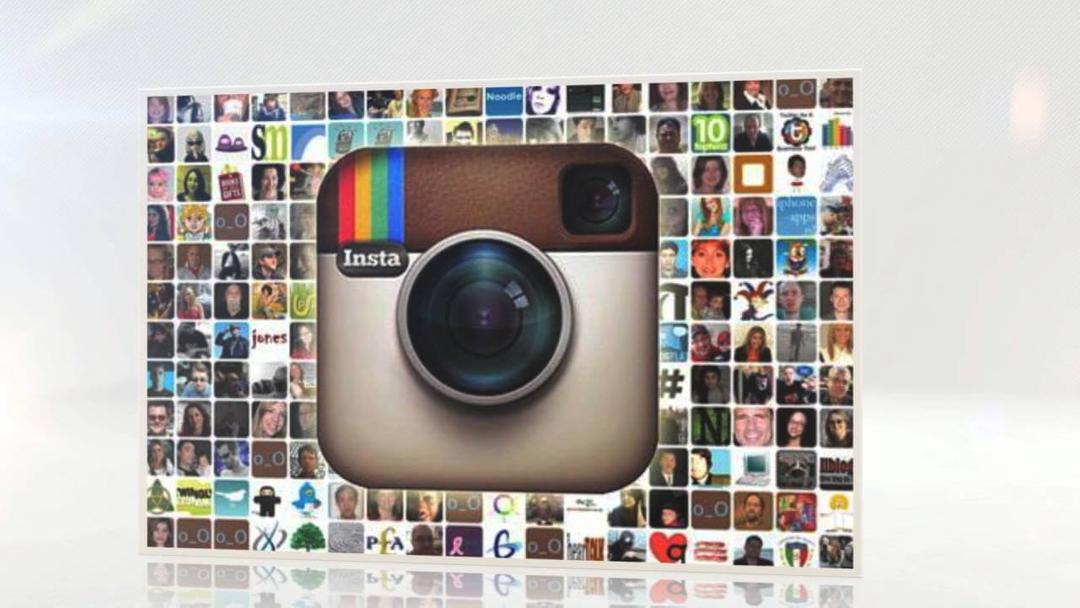Info products: Making. Selling. Going Rich?

- What's all the hype around them?
- $0 investment
- Rolling up sleeves & authoring success
- 1. Audio
- 2. eBooks
- 3. Videos
- 4. Outsourcing
- Best information product ideas to sell online
- 1. Ebook
- 2. Online course
- 3. Webinar
- 4. Membership site
- 5. Templates
- 6. Q&A
- 7. Audio
- Where to sell info products?
- Selling products like a pro
Informational products are a type of goods that cost basically nothing to make. And yet, they can be a reliable source of passive income. Put out some worthy info stuff online, promote it and it will sell itself.

So, what are the information products? Actually, they are clever guides and tools that can help people solve certain real-life issues. Some info products cost handsomely. Others are free. And odds are, you've already used at least one yourself. It could be:
- A YouTube tutorial on digitizing old photos.
- An online course about mastering public speaking.
- An e-book that reveals how stellar PowerPoint presentations are made.
The example list can go for miles. And what's cool, people actually need these products. Because they provide answers, tips and solutions. They sell ideas and knowledge that the consumers of such products can physically benefit from.
The range of topics the info products cover is limitless. Business and work. Love and family. Hobbies and DIY. All you need to do is to find the right package for it.
But are there any other reasons to get into this game?

According to Statista, e-commerce amounted to $3,53 billion in 2019. These days, shopping online is a mundane thing to do. Clients spend as much time browsing digital window shops, as on visiting Walmart or Costco.
The good news is, you can be a part of this gold fever. But you don't have to order units, rent a storage facility or cough up money for shipping and delivery. If you have valuable know-how, ideas or strategy — it can be marketed and sold.
And now the best part. Production of this merchandise is practically costless. In fact, you can begin working on it right now! All you need is:
- Some creativity.
- A laptop and a smartphone.
- A know-how that solves an existing problem.
- Time to polish the end-product and make it shine.

And of course, a marketing strategy. Luckily, you won't need a landing page or a website in the beginning. The product of your genius can be advertised and sold via social media. For example, you can add your product on Amazon and link to it in your Instagram bio so that you then promote it.
Now, let's take a closer look at how to create a decent info product. As we have mentioned, you already have... well, let's say a starter pack of a content creator. So no, you won't need too much equipment in the beginning.
If you're planning to produce an audiobook or a podcast — your laptop is perfectly capable of audio recording. But you will need a microphone. A lavaliere mic will be a fine solution in the beginning. Plus they provide decent recording cheaply: $12,76 for Monotech, $17,99 for Piececool, etc.
You can also use your smartphone as a substitute for a microphone. These days, gadgets are equipped with the mics that do an impressive job of capturing your voice. Basically, any mid-tier device released circa 2018 will help you out.
Apart from gear, you will also need software. Audio-editing can be done with Audacity, Ashampoo Music Studio, Tunekitten Audio Editor and other free apps. MacOS users can benefit from OceanAudio or the in-built GarageBand.

Writing a book requires even fewer resources. All you need is a laptop with Word installed. But even if buying MS Office isn't an option so far, there are plenty of free alternatives. You can try Dropbox Paper, Google Docs, Jarte, and others.
These apps can do the same as Word: text formatting, spellchecking as well as providing picture integration. There's also a rich repertoire of free fonts to try. Visit Font Freak, Linotype or Behance to find classic and new fonts available for free.
As you know, every good book needs illustrations. And catchy cover art. It's okay if you're not a visual artist yourself. Instead, you can use ready photos and drawings of high quality, free of charge. Unsplash, Pixabay, Kaboom Pics will cover your back.
In case you want to make collages for your eBook, there are some nifty tools as well. Photo Pos Pro, GIMP, Krita, Pixlr Editor — these applications are known as the best free Photoshop alternatives. With them, you can make visual compositions, add effects, play with color tonality, etc.

Videos are the main driving force of today's marketing. So, no wonder you want to script and direct a few. This is the best way to attract the audience to your stuff.
You already know how to record voice. To create the video component, you will need an editing tool. PC users can benefit from Windows Movie Maker, meanwhile, MacOS adepts can enjoy iMovie.
You can even try your luck with one of the free mobile apps that do wonders with video. FilmoraGo and Quik are among those.
To make a successful vid, you need to remember that it should:
- Tell a story.
- Have a laconic narration.
- Be humorous, not boring.
- Stay well-tagged, so the viewers will stumble upon it.
As for the rest, you can get fully creative with your short movie. After it's complete, YouTube, Instagram, Vimeo or Metacafe will host your creation for free.

Finally, if you don't want to be the jack-of-all-trades, you can outsource certain tasks. There are a few reliable freelance markets out there online.
For instance, you can go to Fiverr to hire any type of talent. There are logo designers, voiceover artists, session musicians, writers, etc. The prices start with as little as 5 dollars. Upwork, Envato, Outsourcley or PeoplePerHour provide the same services for all budgets.
Thus, you can get a supreme set of illustrations, a charismatic video narrator or an A-grade cover art relatively cheaply.
Here's a little pro tip: search for freelancers whose portfolios are small. They may be wonderful professionals, but since they haven't built up a reputation yet, their top skills can be purchased at a lower cost.
Okay, now let's see what packaging your ideas and concepts can have.
Fast and easy to make, an eBook requires only one thing. It is the top-class expertise of its author. The rest — number of chapters, illustrations, language tonality — depends on your vision only.
An important thing to do from the start is to define who your future readers are. Probably, your is narrow. That's because you address specific issues: better web-design techniques, business sales tactics, HR psychology, etc.

In case your eBook is well-produced and solves a vital issue, it can become a source of steady income. But before putting a price on it, find your target audience and say how important the ideas you offer are. The more valuable your book is, the higher price you can set.
Examples:
- Slid:ology.
- Pay Me Or Else!.
- The Happiness Hypothesis.
Online courses come in all shapes and colors. Some are mass-produced, others have an exclusive approach. Some teach the theory behind sound production and rotoscoping. Others reveal tricks to taking fabulous Instagram photos.
Whatever that is you want to teach in such a course, only your expertise level defines the future success. Luckily, there are plenty of platforms, via which you can sell your knowledge: Coursera, Udemy, Teachable, Thinkific, and others.
Examples:
- Elite Tattoo Pro.
- Globejotting.
- VR Devschool.

A webinar is like an interactive lecture, during which you discuss with your audience certain issues. It can be anything: business ideas, public speaking, stress-free life, etc.
Usually, you sell 1 or 2 recorded webinars dedicated to a specific topic. Mostly, webinars are hosted to promote your main gig: a membership website, exclusive programs, live events, and so on. But sometimes they can generate revenue as well.
Examples:
- The Lunch Box.
- Kapost.
- Kissmetrics.

This product is for those creators who already have a steady fan base. A membership website brings a feel of exclusiveness. You can charge the members a monthly fee, in return giving them something unique: super secret tips, VIP tools for Photoshop, family recipes, etc.
A template is a ready solution to a certain issue. Templates and workbooks are for those clients who don't have time to design stuff themselves. They prefer from-the-box solutions. This is a highly popular kind of digital downloads that you can sell on social media.

Examples:
- Resume/CV templates.
- Landing page template.
- College essay workbook.
A super cheap to produce, Q&A is pretty sellable at the same time. Providing answers to the burning questions, you share your own priceless experience. And nothing ever beats the wisdom earned in the real world.
Examples:
- Any area of expertise: from brain surgery to suit tailoring.
It can be anything: from an interview with a famous expert to a premium podcast. It's not that costly to produce. And in the long run, you can release a whole line of such info products.
Examples:
- Lean In.
- The Willpower Instinct.
- The 4-hour Work Week.

The key to selling an info product is to offer useful insight. But you also need to promote your stuff to keep clients coming and craving more. Social media and Instagram are everything you need.
- Following. Use strategies to build up a steady following: post Instagram stories, like relevant hashtags, write captions, etc.
- Rumors. Obtain a reputation. Show your audience that your expertise deserves respect. Word-of-mouth advertising will bring in more fans if the stuff you offer is really helpful.
- Tagging. Use tags that precisely describe what you sell: business ideas, gardening, SEO, raising a genius, etc.
- Affiliates. Your info products can be promoted, marketed and sold by the specialists. In exchange, they'll take a percentage of all sales.
- Email. A neatly crafted invitation to a live event or a catchy snippet from an eBook — put them in your emails to intrigue the audience.
- Create a page about your product using templates. Then, add its link to your bio on Instagram and other social networks. Also, link to it in the ads. Thus, they can know everything they may want to know before buying your product. Add a buy button so that they can buy being under impression after reading about your product.
And don't forget about your link in bio page. Then you can link to multiple websites from your social profile. We recommend creating the page on the best alternative to Linktree. Read why choose Taplink for the link tree in your bio.

This will liberate your followers from having to search for your books, podcasts, and videos via Google. And if you sell on social media, this gives you a competitive edge over your rivals who link to their heavy content websites.
Taplink has a free plan, so you can see it in action when more and more clicks and plays flow to your landing page, SoundCloud, and so on.
Now you know how to convert your expertise into sweet dividends. Use our tips and succeed in marketing your talent. The demand for info products will only grow, as people need more and more useful knowledge. So, don't hesitate and give them what they want!